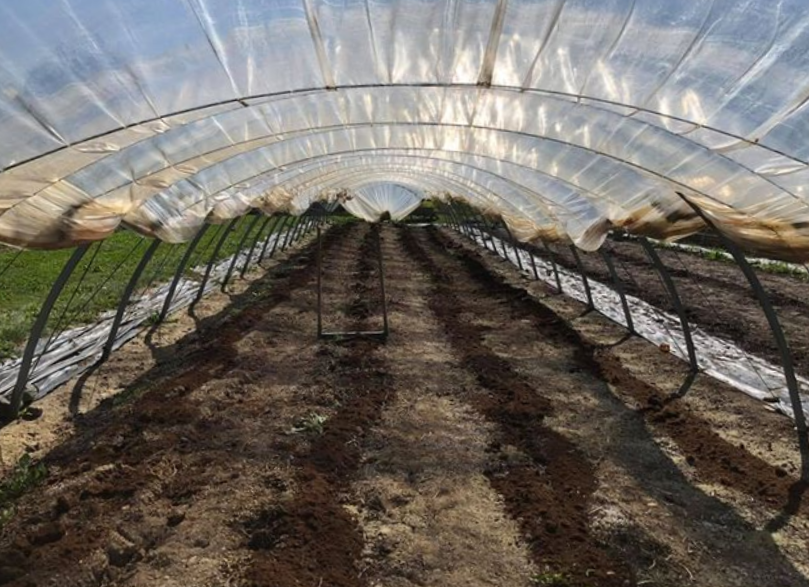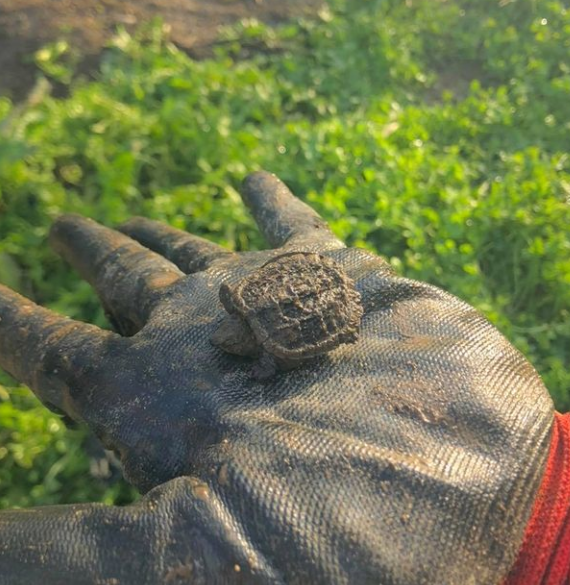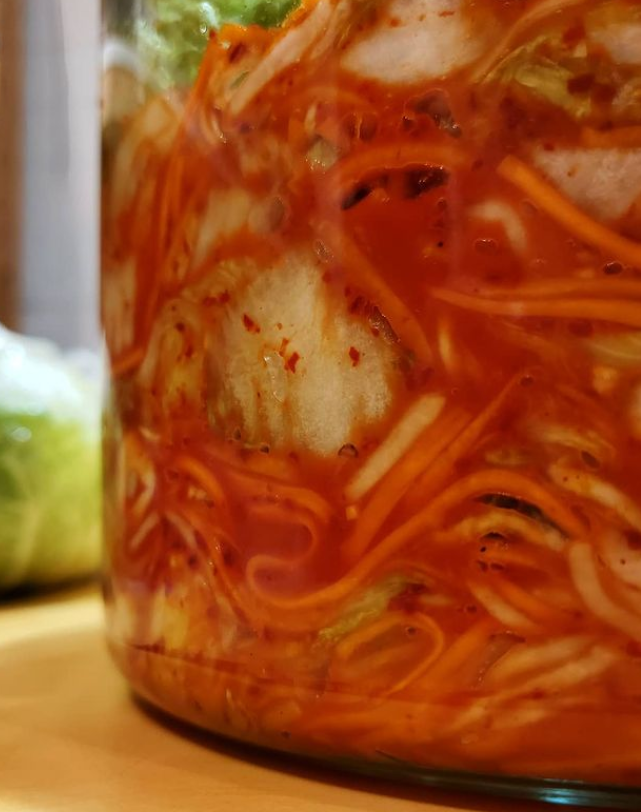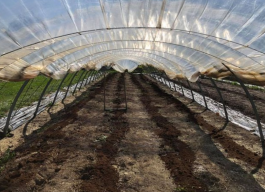November 25, 2021
The Lettuce Rejoice!
Firmly Rooted Farm's Newsletter for their Veggie Loving Farm-ily

Here we are applying a high carbon compost in a caterpillar tunnel to increase carbon content in the soil before planting some winter greens
On the Farm: Dirt to Soil
Hello again my veggie loving friends,
At the farm, winter is a time to reflect on the successes and opportunities presented by the previous growing season. It is a time to create a plan of action that determines what changes could be made to improve the operation. Many farmers use this time in this manner, and this planning is complemented by various farming conferences that provide learning opportunities during the winter. And a topic growing in popularity at every conference is soil.
From soil springs life. The soil itself is complex and multifaceted. To begin, it must be understood that there are different components of soil. It is not one thing but many things: air, water, microbes, minerals, and organic matter. All these aspects modify the soil and its properties. Soil has four main functions; it is a medium for plant growth, it stores and purifies water, it holds carbon from the atmosphere, and it is a habitat for organisms. Good stewards of the land try to understand the importance of these complex relationships and aim to enhance them and benefit from them.
Humans classify soil based upon 3 types: sand, silt, and clay. Many soils are combined types and naming and classifying them is based upon physical and chemical properties. Soils are divided into soil orders, suborders, great groups, subgroups, families, and series. It’s complicated, but knowing this is only really useful to scientists. A farmer can easily find information about their farm’s soil type through soil mapping online or from soil analyses. Firmly Rooted is a Harriston Loam, named by location and type. It has good drainage and a low erosion factor but can be easily compacted. Loam is itself a combination of sand, silt, and clay, blending the best qualities from each type. Sand is porous, silt is textured, and clay retains water and minerals.
Knowing soil type is helpful and it can tell us what possible issues might arise. However, many farmers conduct soil analyses that tell them the physical and chemical properties of the exact soil present on their farm, since management practices affect these characteristics. A soil analysis involves collecting samples in an organized manner from various field sites and sending them off to a laboratory for analysis. It can tell you your soil’s pH, salt levels, other micronutrient levels, organic matter percentage, and more. Often farmers will employ the expertise of a soil scientist to help them interpret results and provide management recommendations.
At Firmly Rooted our soil organic matter (SOM) is around 4%. One of the soil management goals on the farm is to increase SOM. But what is SOM? It is composed of plant and animal debris, soil microbial life, and substances that soil microbes synthesize like nutrients/minerals. When we increase SOM, we increase fertility and beneficial life within the soil. We do this by practising certain management techniques such as low to no-tillage, which you can read more about here, and by applying different amendments providing different functions. Amendments include alfalfa meal which increases nitrogen levels, turkey litter compost which is nutrient-dense, high carbon compost to increase carbon, micronutrients, and many more.
Amendment application is very different between a greenhouse and an open field. High-producing greenhouses often need applications of boron and potassium as they are easily depleted by plants like tomatoes who demand high nutrient availability. Also, covered areas like greenhouses usually run into salt build-up issues in the soil because they lack the rain to clear sodium out of the soils, which is deposited through amendments and irrigation; groundwater has higher salt content. One method we use is amending with gypsum (click the link to learn more).
The question you may be wondering is why? Why care this much about soil? Improved soil quality means healthier and more nutrient-dense vegetables, but there’s more to it. Think back to the four functions of soil. These functions work in tandem; each function requires the others in order to work optimally. But in the era of climate change, the soil’s ability to absorb carbon from the atmosphere is gaining attention. Many land-management practices such as high tillage have resulted in a loss of carbon from the soil, and therefore all functions have been affected to their detriment. But, if we manage our soils correctly, we can act as carbon sinks, helping to mitigate the issue of climate change, or even reverse it in a regenerative cycle. The documentary Kiss the Ground on Netflix is a great primer for the opportunity of soil to address climate change.
Our greatest weakness at Firmly Rooted, or rather an opportunity, is knowledge. There is just so much to know about soil, I have barely scratched the surface. It’s a big subject and some people dedicate their entire lives to it. Additionally, there is so much about soil that no one knows. For example, it isn’t known exactly how many different microbes are present in the soil because of the sheer number. In one handful of soil, you may be holding more microbes than people who have ever walked the earth. Isn’t that incredible?!
Kitchen Corner

Winter radishes are a delight to behold. Gorgeous rings of colour brighten up any dish. You can feature them in a radish salad to add something light to typically heavy winter meals. You can add them to a stew to add a bit of kick. You can even ferment them (although they do emit a notable smell, that’s part of the fun)! I’ve shared with you an adapted and easy Chinese-style braised daikon radish recipe that only takes 30 minutes to make.
Kitchen Clean-Up
We have finally received the Ministry of Environment sample results conducted after the spray incident in early August. They show clear contamination by the sprayed insecticide, which will result in the loss of our organic certification. We are pursuing legal action.
That’s all for now folks, happy eating until next time!
Farmer Erika




